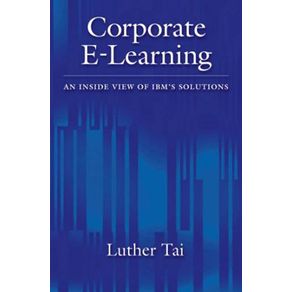Corporate e-learning has become increasingly important in the contemporary universal-access business world, and can provide strategic and competitive advantages to corporations as a way to accelerate training and reduce the high costs of face-to-face learning programs. However, most of thebooks that are written about e-learning do not describe in detail how corporate e-learning is actually implemented within a specific company. Corporate E-Learning fills that gap by describing in depth how e-learning programs are developed and instituted, and how their effectiveness is measured, fromthe perspective of practicing e-learning professionals at IBM, an early and liberal user of e-learning technologies to train their global workforce. Drawing on a wealth of in-person interviews of numerous e-learning professionals at IBM, as well as recent e-learning literature, Tai discusses how IBMhas significantly contributed to the evolution of corporate e-learning. In the course of doing so, he makes useful comparisons with other companies and industries, and draws conclusions that are applicable to any company considering utilizing e-learning. Companies should be careful, concludes Tai,to use e-learning only when it makes strategic and economic sense, not simply because the technology is available. In addition, e-learning should always be used along with other more traditional means of learning, and carefully monitored by feedback mechanisms to measure whether its objectives havebeen accomplished, and how e-learning programs might improve in the future. Corporate E-Learning is designed for classroom use in technology management courses, and will also appeal to corporate professionals who are involved in training, human resources development, and performanceimprovement.



